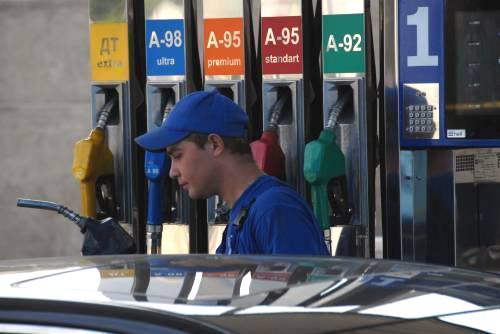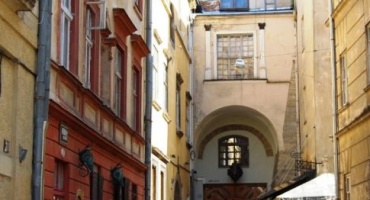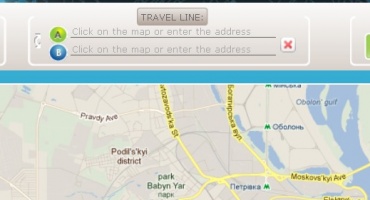9 MOST USEFUL UKRAINE DRIVING TIPS
2018-08-29 11:22:29
So you decided to head over East and explore Ukraine on all four. You rented a car or brought your own across the border, and now you are wondering how the actual driving in Ukraine really is. Is it safe? How should I deal with traffic police? What are the traffic regulations? These and many other questions are answered in this collection of most useful Ukraine driving tips. Enjoy it! :)
1. Getting your car across the border in Ukraine
When you get to the border, you will most likely see two rows: one with large trucks and another one - with regular cars. Join the second one. At first, you'll be asked to show your passport and car registration documents. Make sure you know where your VIN (Vehicle Identification Number) is located, as there were times when people were asked for it. Next, you will get to the passport control, and finally custom clearance.
Keep in mind that Ukraine is not in European Union and EU cross-border insurance policy does not work in Ukraine. You can buy Ukraine-valid insurance at the border. Expect to pay from 25 to 30 EURO (for one month). Make sure that you are driving not on a public holiday, as car insurance booths at the border can be closed then.
Important documents to carry with you:
-
International driving license
-
Your country national driving license
-
Passport
-
Vehicle registration certificate
-
POA in case the car is not yours
-
Car insurance (you can purchase it at the border)
Very often car queues can be quite long, so allow yourself plenty of time to do the actual crossing. It might be a good idea to choose a smaller border crossing, with less traffic. Also, you can go online and use webcams to check the lines (the majority of them show situation on the western border of Ukraine)
Make sure your luggage does not exceed the limits of what is allowed to carry over across the border.
Here's what you can bring into Ukraine:
-
Cash and travel checks totalling up to USD 10,000. If the money you carry in exceed USD 3,000 it should be declared in written form.
-
Bank metals, which total weight is up to 100 grams per person, regardless of age. To be declared.
-
Checks, issued by foreign banks and non-bank organizations and amounting up to USD 50,000 (or its equivalent in other currency). To be declared.
-
Alcohol:1 liter of vine, 2 liters of beer, 2 liters of strong beverages (whisky, vodka, etc)
-
Tobacco: 200 cigarettes or 200 grams of tobacco
-
Food, a total cost of which is lower EURO 50
-
Goods, cost of which is lower EURO 200 and weight is less than 50 kg.
List of things to have in the vehicle ( required by law):
-
Warning triangle. Every vehicle with four wheels or more has to have it.
-
Headlamp beam deflectors. Depending on your car, you will either need deflector stickers or have to adjust the beam manually.
-
First aid kit and fire extinguisher.
-
Helmet for motorcyclist and their passengers.
2. Taking the roads
The biggest question that people have about driving in Ukraine is what the state of the roads is. Well, lately it has been fixed in many areas, but still some parts remain bad. Quite bad, to be frankly. That should not stop you from exploring Ukraine on wheels - just make sure you check your tires and suspension before your trip!
Overall, roads in Ukraine can be divided into three types. First is the highways. In reality, there is the only road that can be called The Highway - it's an 18 km strip between Kyiv and Boryspil International Airport. It's the most similar to what you might be used to. The road is wide, well maintained, and signposted. The other semi-highways are also in quite a good condition: particularly road Kyiv - Chop and Kyiv - Odesa. They are much better than any other road in Ukraine, have two traffic lanes, are well-maintained, compared to the others. On the maps, they are marked as M-roads and connect the most important regions and cities of the country.
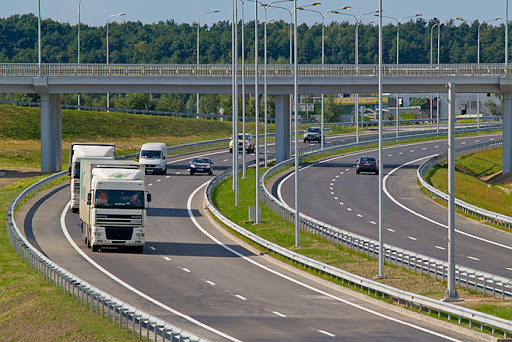
Kyiv - Chop M-highway
H-roads are of national importance and are the second most important transportation corridors in the country. They are usually worse, covered with loosely repaired potholes and can be more of a challenge to drive on. They also differ from region to region. Allow more time for driving, if your route takes you along one of the H-roads.
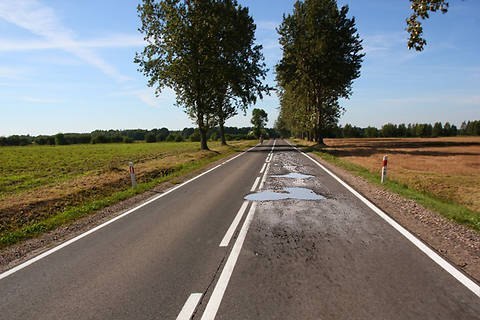
H-roads of national importance
If you go further into the countryside, be ready for a tough driving experience. You'll need lots of patience and good driving skills :) Here's a photo of what you can expect (not all of it is that bad, but pretty much a lot).
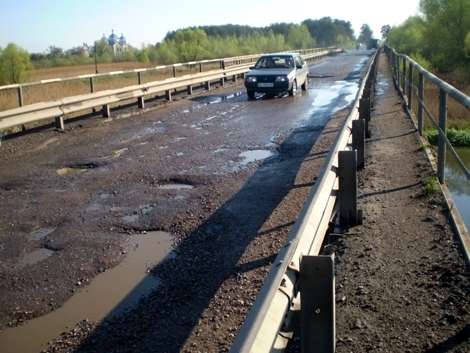
Countryside road in Ukraine
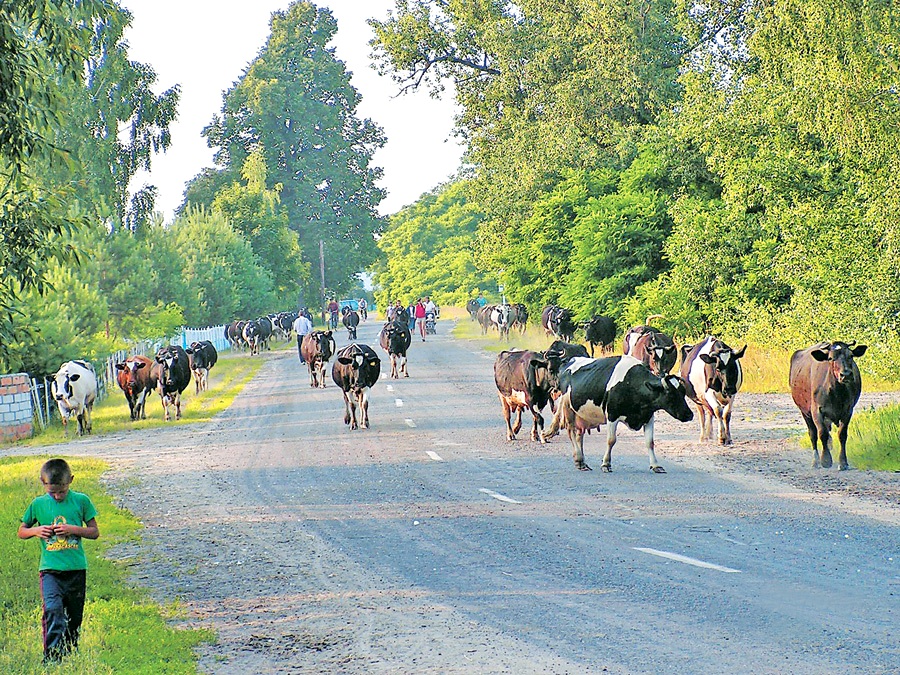
Make sure that your vehicle is serviced before you head over here and bring some spare parts with you, in particular if the car brand is not common.
The following link might be useful for checking the condition of the roads on your way.
3. Finding reliable driving maps
You can buy good local maps in any bookshop in major cities. Keep in mind that most road signs tend to be in Cyrillic, so it's advisable to learn at least some alphabet. Large cities, like Kyiv, Lviv and Odesa, have signposts in English as well, but they are not conveniently spaced across the road network, so it's safer to just pick up some Cyrillic.
Using GPS maps is a good alternative in an all-Cyrillic road landscape. Best maps of Ukrainian road network is for Garmin devices. The best map for Garmin is Navlux map. At the same time a detailed map of Ukraine comes as a part of Garmin's City Navigator Europe NT.
4. Following the speed limit and other rules
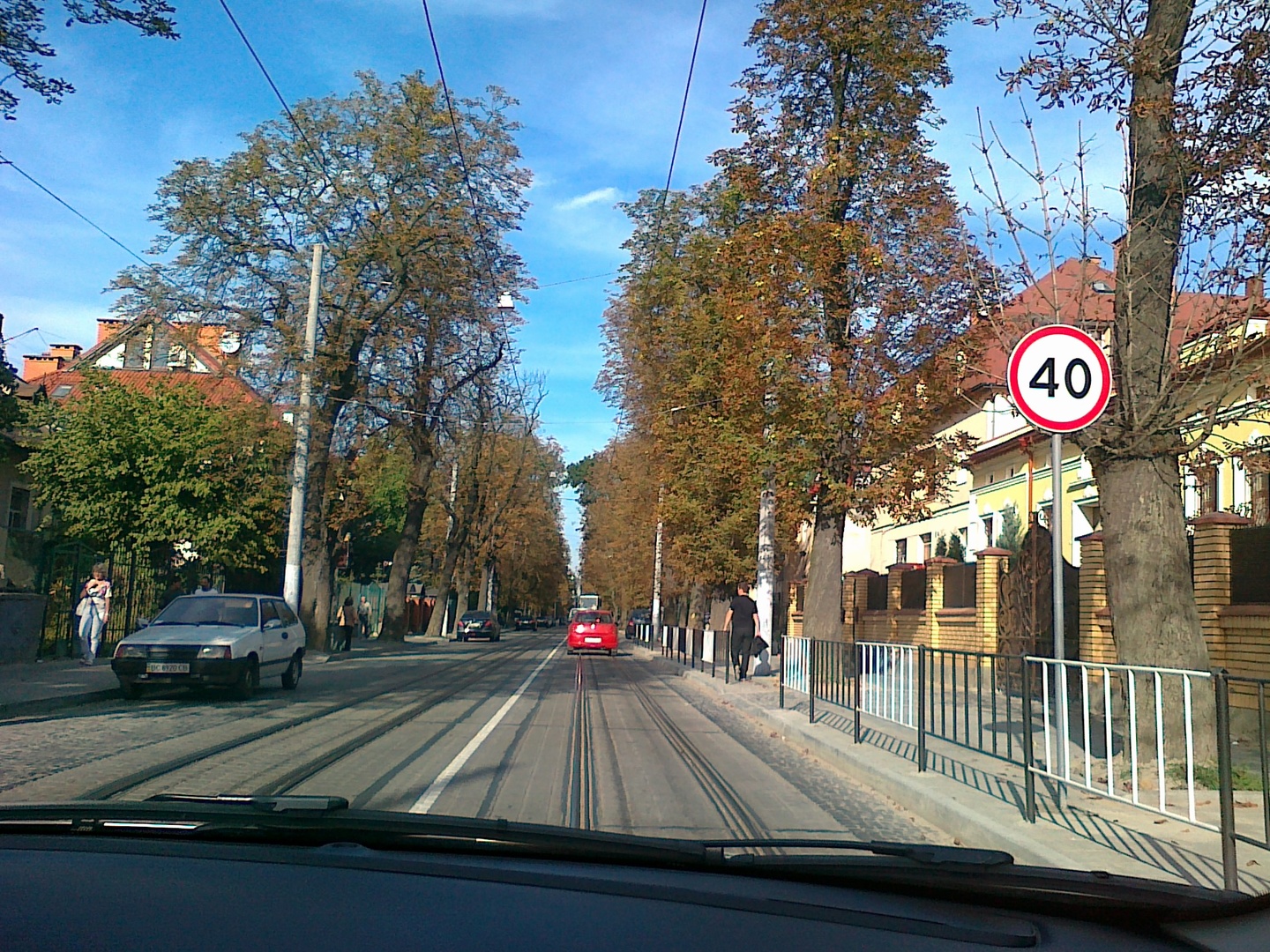
Speed limit in the cities in Ukraine is 60 km/hour. Outside of populated areas, on the M- and H-roads, you can drive up to 90 km/hour. Road signs are not usually repeated, so pay good attention to the speed limits, as the traffic police is always around.
Ukraine has zero-tolerance policy towards Drinking While Driving. Even one beer can get you into trouble, so make sure to have someone else drive, in case you decide to party. Police will often test your alcohol levels, but can charge you with a ticket, even without doing so.
Using seat belts is required by Ukrainian traffic laws, though not always strictly followed by the local drivers. In any way, we strongly advise to buckle up, both at the front seats and in the back.
Night driving is not recommended. Poor road conditions, along with loose driving rules make it much easier and stress-free to just stay overnight at any roadside B&B.
5. Dealing with other drivers
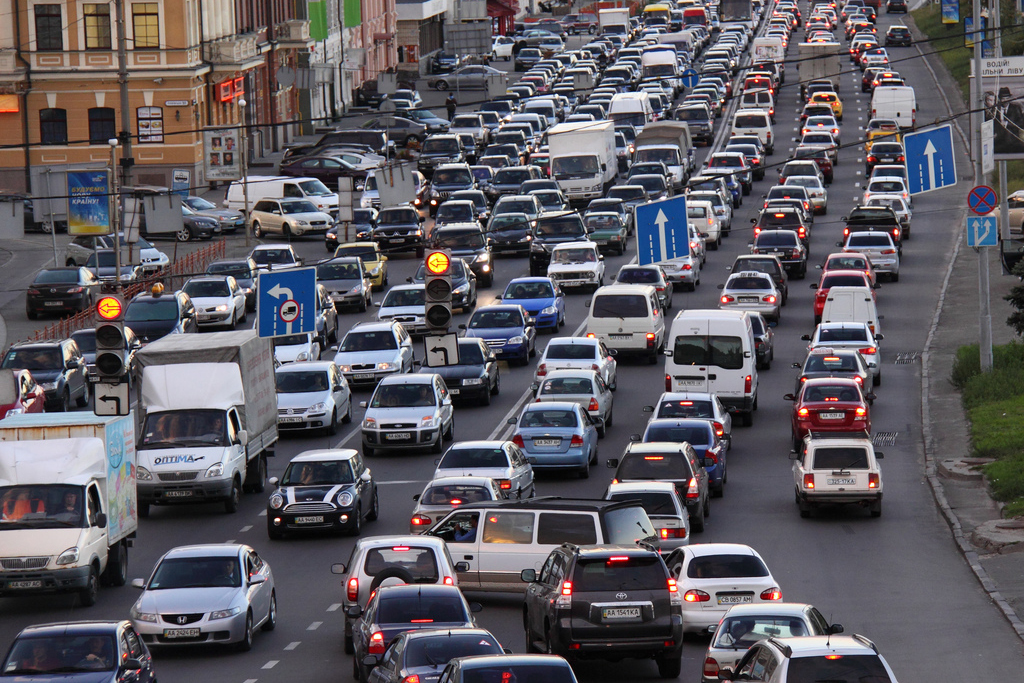
Usually out at 6 am and back at 6-7 pm :)
Ukrainian drivers tend to drive more recklessly than their EU counterparts. First come first serve basis is often the rule for the 'right of way'. Corrupt officials, accompanied by the car parade, often drive very fast and require others to give the way. If you've driven in other countries before, you can imagine what to expect if we say that Ukrainian driving rules are much better than those in Middle East or Asia, but are worse than in European Union, and comparable to those in other Eastern European countries (Poland, Latvia, etc.). All in all, they are manageable if you pay attention.
If you are driving on the rural roads, beware of other 'walking hazards', such as animals (cows and chicken in particular), old grandpas on the bicycles with the hay stacks, and horse carriages (you can see them even as far as on H-national importance roads). While it's quite scenic, you need to pay good attention to the roadsides in the villages to avoid any incidents.
6. Gas stations and car repairs
There are plenty of good gas and service stations along the road in Ukraine. You can find all types of fuel there, including unleaded 95 and unleaded 98 octane. Not all the gas stations accept credit cards, so be ready to pay in cash. Most of them are also self-serviced and cash-in-advance. Here's a good map of petrol stations across Ukraine (map is conveniently in English), as well as current gas prices. Useful to check before you go to the countryside!
It's always handy to have a list of nearest car repair shops before you head out for your journey. Here's a good collection: you'd need to Google Translate it, but it is quite comprehensive, and can be sorted by the city, as well as by the car brand.
7. Driving in winter
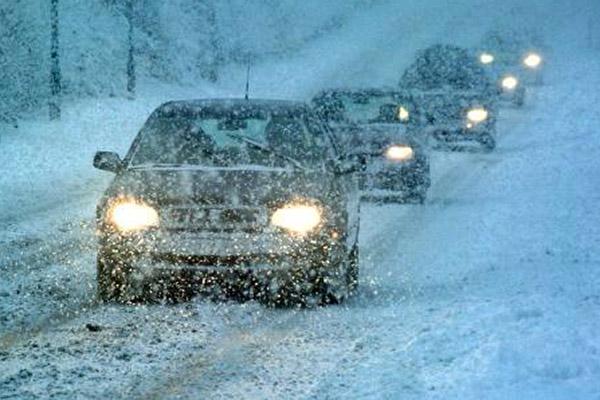
Getting stuck like that is no fun!
We strongly advise against driving on your own in winter. Snowstorms are quite often and roads are kept in poor conditions, with snow and sleet very common. Before you head out, try checking the traffic jams map by Yandex, widely used by Ukrainian drivers in major cities (Kyiv in particular) - again, Google Translate is required. And always, ALWAYS check the weather forecast for any upcoming snow storm.
8. What do in case of an accident
If in an unfortunate situation you do get into an accident, here's a list of steps that you should take, in order to minimize the stress and troubles.
You SHOULD:
-
Switch on your emergency blinker
-
Put the emergency/accident sign 50 m away from your car to signal to the upcoming traffic
-
Provide first aid assistance to the injured (if there are any), and call an ambulance (101)
-
DO NOT MOVE YOUR CAR or any other items related to the accident (tree branches, etc.)
-
Try to keep all traces of accident intact
-
Call your insurance company
-
Call your embassy or consulate representative (make sure to have the embassy number always printed out and close to you)
-
Call someone who speaks Ukrainian/Russian (high chances that the police will not speak English, so calling anyone in your hotel, embassy or friend's circle will be a good idea)
-
Call Traffic Police (here'a list of regional and city offices)
-
Take plenty of photographs from the accident site (from all possible directions), the more the better
You SHOULD NOT:
-
USE ALCOHOL, DRUGS OR ANY ALCOHOL-BASED MEDICINE (with the exception of those that are already in your first aid kit)
-
Sign anything you do not understand or agree with
Once the traffic police arrive at the accident site, they should give you the following documents:
-
Report of accident scene survey
-
On-site accident scheme, prepared with your assistance
-
Certificate of a damaged vehicle (approved by Order of the Armed Forces of Ukraine 22-10-03 № 1217), describing the damage in details
In case the damage is not big, and you decide to clear the accident with the other party without involving the traffic police, make sure that:
-
they (or you) pay you for the damage immediately
-
they (or you) give a signed document, stating that you do not have any claims or complaints to the other party
9. Dealing with Ukrainian police
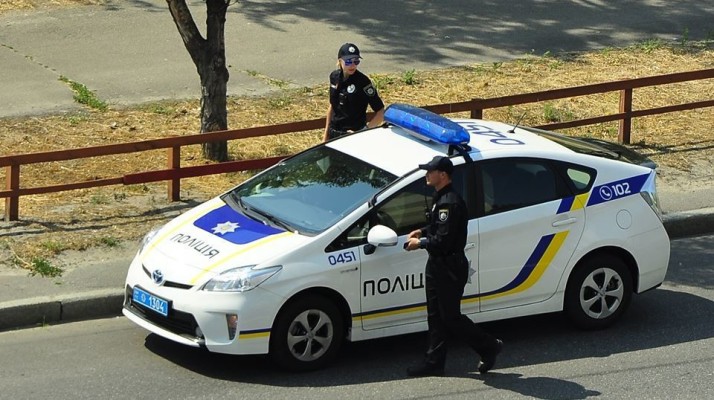
Well, we'd be happy to say that new patrol police was introduced in Ukraine a year ago. No more stop stations on the side of the road. Police cars just drive around and they can follow you in case there is something wrong (like in USA). But you should not be scared of them as they are friendly and helpful and most of them do speak English ( big cities only). No more worries about bribing, it is strongly discouraged. If you give in and try to bribe, you will contribute to the enormous corruption that already exists in the country and will in no way be a responsible traveler.
If police stop you:
-
Do not get out of the car (you are not required to, the police are required to come to you instead)
-
Ask for the ID, name of the policeman and police car plate number. Write it down. Ask what is the reason for stopping you
Here's the official list of reasons for which traffic police can stop your car:
-
Accident
-
Strange driving manner (winding away, that might signal that you are drunk or under influence)
-
An absence of license plates, their invisibility, inadequacy standard, pollution, poor visibility from a distance of 20 meters
-
Signs of a car breakdown
-
Vehicle theft suspicion
-
The need to poll the driver or passengers as witnesses to an accident or a crime
-
The need to assist and help other drivers, pedestrians, police officers or as a witness in the accident
-
Vehicle or luggage poses a danger to other vehicles or pedestrians
-
Violation of the rules of use of light and sound signalling devices
How and where to pay fine
If you did violate the driving rules you will be given a fine ( the amount depends on the case of violation). You do not pay directly to the police officer! You can do it in the following ways:
-
Through bank establishments
-
Via IBox
Master Card and VISA are accepted. You have to do it within 15 days otherwise your fine starts growing. It is important to keep the receipt as a proof of payment. More detailed information on the amount of fines you can find here.
Have you ever explored Ukraine in your own car? What other tips would you suggest? Please, share in the comments below and we'll be glad to add your suggestions to the article. Drive safe!
Travel with us
Join thousands of travelers, who explored Ukraine with our adventure, cultural or heritage tours since 2011.Trusted by National Geographic, BBCW, Wild Frontiers and others.
Ask us anything

